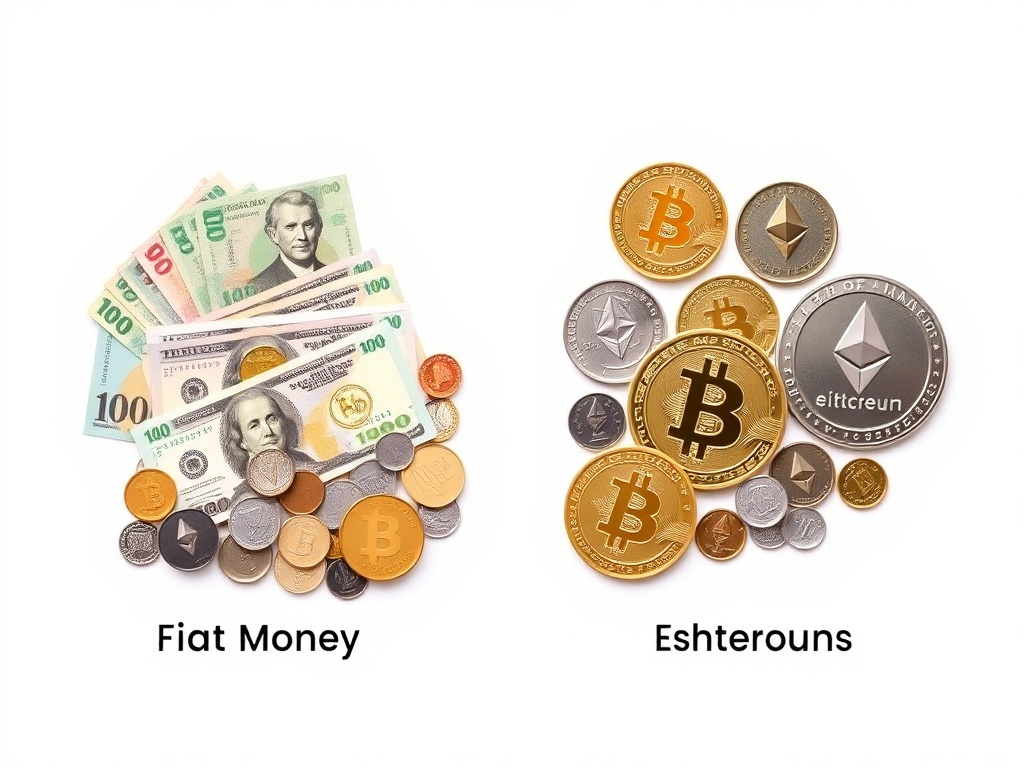In the ever-evolving world of cryptocurrency, few innovations have had as significant an impact as stablecoins. Designed to bridge the gap between traditional finance and the volatility of digital assets, stablecoins are redefining what it means to hold and transfer money in the digital age.
Unlike cryptocurrencies such as Bitcoin or Ethereum, whose values fluctuate based on market demand, stablecoins are pegged to stable assets like the U.S. dollar, the euro, or even gold. This combination of price stability and blockchain efficiency makes them a powerful tool for everyday transactions, cross-border payments, and even as a foundation for central bank digital currencies (CBDCs).
As global economies increasingly digitize, the question arises: what role will stablecoins play in the future of digital money? In this comprehensive analysis, we explore how stablecoins work, their advantages, challenges, and why they might become a cornerstone of the global financial ecosystem.
What Are Stablecoins?
At their core, stablecoins are cryptocurrencies designed to maintain a stable value. They achieve this by linking their price to a reserve asset, such as fiat currency or commodities. This structure provides a level of predictability that traditional cryptocurrencies lack, making stablecoins more suitable for transactions, savings, and business operations.
There are three main types of stablecoins:
- Fiat-collateralized stablecoins: Backed by traditional currencies like USD or EUR, stored in regulated financial institutions. Example: Tether (USDT), USD Coin (USDC), TrueUSD (TUSD).
- Crypto-collateralized stablecoins: Backed by other cryptocurrencies. They use smart contracts to automatically adjust collateral levels. Example: DAI (from MakerDAO).
- Algorithmic stablecoins: Not backed by physical assets but use algorithms to control supply and demand to maintain a stable price. Example: Ampleforth (AMPL) or UST (Terra) — although some have faced instability in practice.
The Rise of Stablecoins in the Global Economy
Stablecoins emerged as a response to the volatility of traditional cryptocurrencies, offering users a safe haven during market fluctuations. Their rapid adoption demonstrates their growing importance in the digital economy.
Today, stablecoins are used for:
- Cross-border payments: Faster and cheaper than traditional remittance systems.
- DeFi (Decentralized Finance): Providing liquidity and stability to lending, borrowing, and trading platforms.
- Merchant payments: Enabling businesses to accept crypto without facing price volatility.
- Hedging strategies: Allowing investors to move funds without exiting the crypto ecosystem.
According to data from CoinMetrics and The Block Research, stablecoin transactions now exceed trillions of dollars annually, reflecting their critical role in the digital asset market.
Why Stablecoins Are Essential for the Future of Digital Money
Stablecoins combine the best aspects of fiat and crypto, creating a hybrid financial instrument that offers both stability and innovation.
1. Reducing Volatility in the Crypto Market
Traditional cryptocurrencies experience extreme price fluctuations, making them impractical for daily use. Stablecoins, by contrast, provide predictable value, enabling their use for salaries, purchases, and global trade.
This stability encourages broader adoption among users who are hesitant to engage with volatile digital currencies.
2. Driving Financial Inclusion
Over 1.4 billion people worldwide remain unbanked. Stablecoins can help close this gap by providing access to financial services through digital wallets and blockchain networks. They allow users in regions with unstable banking systems to store value safely and transact globally.
3. Revolutionizing Cross-Border Payments
Traditional cross-border transactions often involve high fees, delays, and intermediaries. Stablecoins make these payments instant, borderless, and inexpensive.
For example, remittance workers sending money home can bypass banks and transfer value directly through stablecoin platforms, saving time and costs.
4. Empowering Decentralized Finance (DeFi)
Stablecoins serve as the backbone of the DeFi ecosystem. They provide the stability needed for decentralized lending, yield farming, and derivatives trading.
Platforms like Aave, Compound, and Uniswap rely heavily on stablecoins to facilitate liquidity and price stability within their protocols.
5. Supporting the Creation of CBDCs
Many governments exploring Central Bank Digital Currencies (CBDCs) have studied stablecoins as a foundational model. Stablecoins demonstrate how digital currencies can function effectively while maintaining price stability and technological resilience.
Projects like China’s digital yuan, the European Central Bank’s digital euro, and the Federal Reserve’s research into a digital dollar have all drawn insights from stablecoin innovation.
The Technology Behind Stablecoins
Stablecoins leverage blockchain technology for transparency, traceability, and security. Each transaction is recorded on a distributed ledger, reducing fraud risk and enabling real-time auditing.
Moreover, smart contracts automate critical functions like collateral management and price stabilization. This automation eliminates the need for intermediaries and ensures that stablecoins remain decentralized, efficient, and secure.
However, the success of stablecoins depends heavily on network scalability and regulatory clarity. As demand increases, blockchain networks must handle higher transaction volumes while maintaining low costs and high speeds.
Challenges and Risks of Stablecoins
Despite their advantages, stablecoins face notable challenges that could affect their long-term sustainability.
1. Regulatory Uncertainty
One of the most significant barriers to mass adoption is regulation. Governments worldwide are still determining how to classify and supervise stablecoins.
The U.S. Securities and Exchange Commission (SEC) and the European Union are actively developing frameworks to ensure transparency, prevent money laundering, and maintain financial stability. However, overly strict regulations could limit innovation.
2. Centralization Concerns
While stablecoins promise decentralization, some — particularly fiat-backed ones — rely on centralized entities to hold reserves. This setup introduces counterparty risk if those institutions mismanage funds or fail to maintain transparency.
3. Algorithmic Instability
Algorithmic stablecoins, though innovative, have faced major failures. The TerraUSD (UST) collapse in 2022 highlighted the fragility of algorithmic mechanisms and underscored the need for stronger safeguards.
4. Market Dependence on the U.S. Dollar
A majority of stablecoins are pegged to the U.S. dollar, which raises concerns about global monetary dependence. Diversifying collateral to include other fiat currencies or assets could make the system more resilient.
Stablecoins and the Future of Global Payments
Stablecoins are reshaping how businesses and individuals transfer money worldwide. Payment giants like PayPal, Visa, and Mastercard are already integrating stablecoin technology into their systems.
For example, PayPal USD (PYUSD) represents a significant step toward merging traditional payment networks with blockchain-based currencies. These integrations will likely accelerate the mainstream adoption of digital money and make stablecoins a fundamental part of global commerce.
The Path Toward Mass Adoption
To fully realize the potential of stablecoins, several key developments must occur:
- Clear and consistent regulation to protect users and foster innovation.
- Interoperability between different blockchain networks to enhance usability.
- Transparency and regular audits of reserves to ensure stability and trust.
- Public-private collaboration to integrate stablecoins with traditional finance.
As these elements come together, stablecoins could evolve from niche crypto tools into universal instruments for trade, investment, and savings.

In Summary
The rise of stablecoins marks a pivotal turning point in the evolution of digital finance. They provide the stability traditional cryptocurrencies lack while offering the speed, transparency, and accessibility of blockchain technology.
As governments, institutions, and consumers embrace the digital economy, stablecoins and the future of digital money are becoming inseparable concepts.
While challenges remain — particularly around regulation and trust — the potential for stablecoins to revolutionize payments, remittances, and decentralized finance is undeniable.
In essence, stablecoins are not just a bridge between the old and new worlds of money — they are the foundation of a more inclusive, transparent, and efficient financial future.



